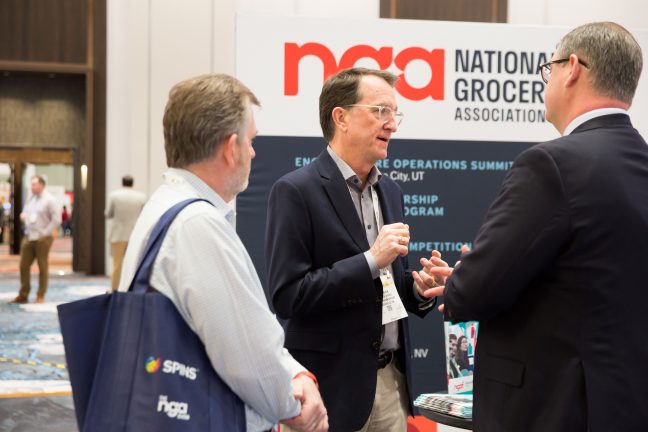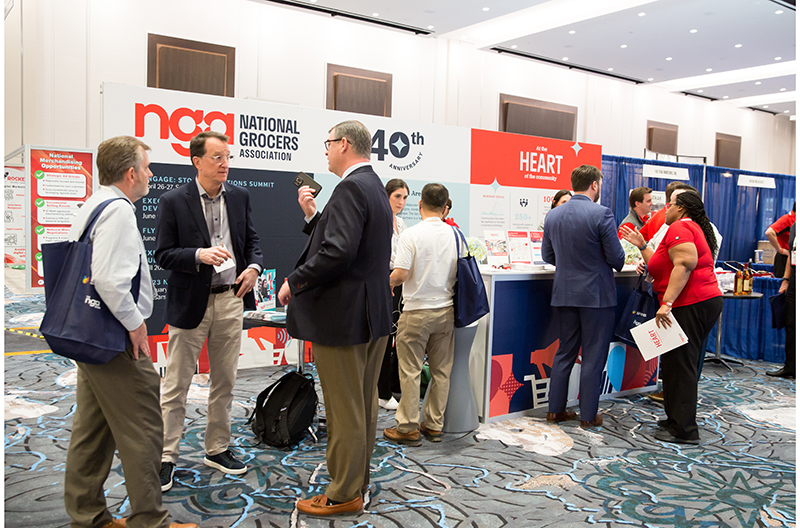Sponsored Content

Consumers are accustomed to getting pretty much whatever they want, whenever they want it. For many, the pandemic was a huge wake-up call, as the nation’s supply chain faced unprecedented challenges.
Food inflation continues to be driven by a variety of factors that are impacting grocery as well as other retailers and manufacturers. Chief among these factors are the high cost of fuel and the shortage of labor, which has driven up the cost and slowed the flow of goods at every point on the supply chain.
Independent community grocers are working closely with their suppliers to secure supplies of high-demand goods at the best prices they can but, facing increased operating costs themselves and working on historically tight margins, periodic shortages and higher prices have been unavoidable. Our members are engaging their shoppers as they seek the best value for their stretched grocery dollars, from new recipes to product substitution suggestions.

Of course, it doesn’t help that wholesale inflation accelerated in September after two straight months of falling prices, according to data released Oct. 12 by the Labor Department. Grocery continues to be among the sectors impacted the most, with grocery prices up nearly 14 percent year over year, according to Numerator’s Price Pulse tracker, with rural and suburban consumers seeing slightly higher inflation than city dwellers.
Even amid supply chain and labor challenges, independents carefully managed inventory while compressing margins in key departments to fuel sales in 2021, according to the 2022 edition of the Independent Grocers Financial Survey, a joint study between NGA and FMS Solutions.
The study documents a complex marketplace in which the only constant continues to be change. Grocery retailing remained in flux on both the supply and demand sides. Inflation and out-of-stocks prompted shoppers to switch between items, sizes, brands and stores.
“Supply chain challenges kept independent retailers on their toes with historically low order fill rates averaging 74.6 percent,” Robert Graybill, president and CEO of FMS Solutions, noted when the survey results were released earlier this year. Labor shortages and a complex regulatory environment compounded the challenges coming out of a period of pandemic-driven record sales.
Here are some ideas for weathering this perfect storm:
Collaboration with your trading partners. Independent retailers and their suppliers, whether wholesalers or DSD manufacturers, should be in constant communication about stock conditions and shelf demands. Advance planning, always a good practice, is more important than ever to stay on top of possible supply disruptions during times of high demand, like holidays. If the pandemic has taught us anything, it’s to expect the unexpected. As IGA President and CEO John Ross wrote in The Shelby Report in August, “We have to work with suppliers and wholesaler partners to do our part, too. Even with rising costs, the grocery store is still a far better value for fresh heathy meals than restaurants and take out, and we need to help our shoppers see how far their dollars can go in local stores. And all parts of the supply chain have to be looking at ways to reduce costs.”
Nurture your local suppliers. The pandemic also demonstrated that consumers trust independent community grocers as a source of wholesome food products, many procured within close radius of stores. Most independents have historic relationships with local growers and manufacturers; now’s the time to strengthen those bonds.
Invest in technology. Labor is tight – everyone is asking their associates to do more, making it harder to stay on top of supply. Explore options for streamlining your inventory management processes. Free up personnel whose time can be better spent in consumer-facing tasks to demonstrate you’re upholding expectations for service.
Boost your communication. Your shoppers are looking to you for answers about why food is more expensive and why certain products might be out of stock more frequently. Be honest and be transparent. Explain things in simple terms. Seek out the best deals you can find. Offer alternatives. Keep folks in the loop about what’s out of stock, why, and when it’s due back on the shelves. Leverage social media and the trust you’ve established in your community.
Network with other grocers. Independent retailers are some of the most innovative and resilient operators in the grocery industry. They’re also willing to share ideas and best practices with grocers in other markets around the country. Perhaps one of the best ways to engage other retailers is by attending The NGA Show, where networking opportunities abound, not only with merchants but with suppliers and service providers also contending with supply chain constraints. That, along with robust educational content, makes The NGA Show a must-attend event for the future of your business. Learn more here about attending the next show, taking place Feb. 26-28 at the Caesars Forum Convention Center in Las Vegas.

And if you’re not already an NGA member, consider joining to take full advantage of opportunities beyond the show, like committees and share groups in which the learning continues year-round.
At NGA, we’re continuing to keep our members updated on situations as they are related to supply chain and inflation, mostly by way of education and informational learnings, such as our webinars and other member communications.
We’re definitely listening closely to our members to make sure we’re offering the guidance they want and delivering not only insights on how the market is unfolding but how they can help the shoppers in their communities maximize their value. We’re seeing a growing number of our members being creative in securing deals for their customers and engaging them on social media about it.
It’s hard to say when things will return to “normal.” In the meantime, keep doing what independent grocers do best – feed your communities, come what may.
To learn more about Greg Ferrara on our Experts page, click here.

